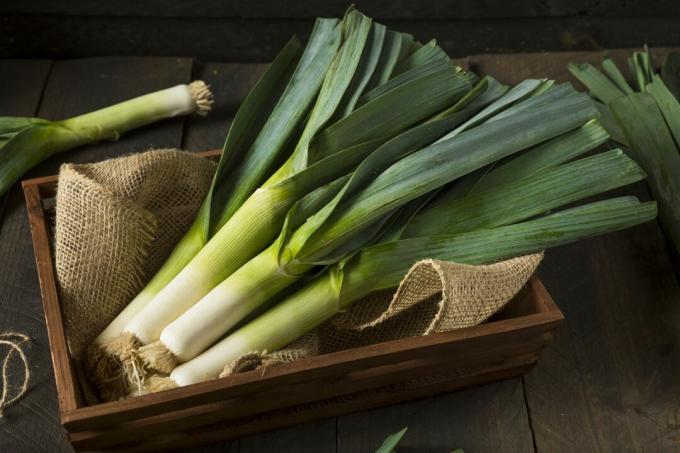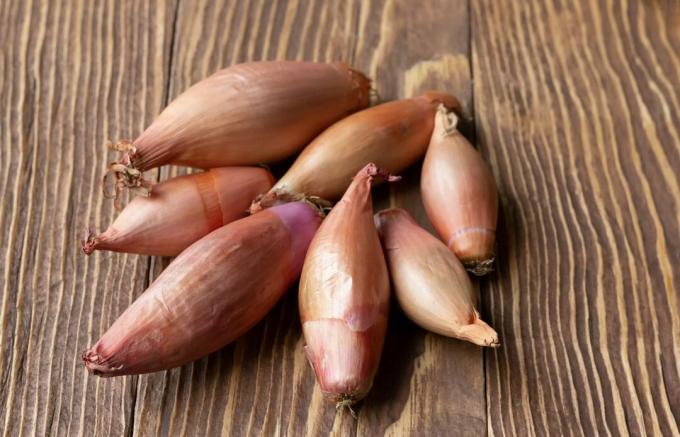Is there a difference between leeks and leeks? And are onions and shallots the same thing? We answer your questions about the different onion plants.

The large bulb family (Allioideae), also called leek plants, can be a bit confusing. If several dozen synonyms for one and the same onion come into play, you quickly lose track of everything. With a few simple tricks, however, onions, leeks, etc. can be easily distinguished from one another.
contents
- 1. Are leeks and leeks the same?
- 2. What is the difference between leeks and onions?
- 3. Is there a difference between onions and spring onions?
- 4. What is the difference between onions and shallots?
1. Are leeks and leeks the same?
With leek or leek (Allium porrum) one and the same plant is meant. For a long time, only the term "leek" was used in German-speaking countries. Only in German-speaking Switzerland and in parts of Hesse, Baden-Württemberg and the Saarland has the term “leek” been used. Since the 1970s, however, the name “leek” has been gaining increasing popularity throughout the German-speaking area, and both names are used in retail today.

2. What is the difference between leeks and onions?
Although both belong to the family of Allioideae it is easy to include leeks and Onions (Allium cepa) to distinguish. Whether you say leek or leek at home, you mean something similar to the spring onion Vegetables that do not form a thickened onion, but have characteristic flat and long leaves. They are white at the bottom and turn dark green towards the top.
Onions are the only leeks that form an underground storage tuber. These and all known onions are white and have a brown skin. The leaves are tubular and also green. While we mainly consume the subterranean part of the onions, the entire plant is used for the leek.
Differences between leek and onion:
| leek | onion |
|---|---|
| Not a thickened onion | Typical thickened onion |
| Stores energy in the leaves | Underground storage organ |
| Flattened leaves | Tubular leaves |
| Whole plant is used in the kitchen | Usually only the onion is used |
3. Is there a difference between onions and spring onions?
In the Spring onion (Allium fistulosum) and the normal onion are two different plants. The rumor persists that spring onions are simply kitchen onions that are harvested too early, but that is not true. The spring onion, also called spring onion or winter onion, is unable to form a rounded, thickened onion. It only has a cylindrically thickened shaft. In the case of the spring onion, the entire plant can also be consumed.
Typical characteristics of spring onions:
- Thinner and smaller than onions
- Mild taste
- Not a round, thickened onion, but a cylindrically thickened shaft

4. What is the difference between onions and shallots?
Another friend of the leek family is that Shallot (Allium cepa var. aggregatum). Shallots are very similar to the onion and do not form a separate species in the leek family. The plant, which comes from Asia, is characterized by a milder taste than the normal onion. Other distinguishing features of the shallot are their pink skin, their typical elongated shape and the fact that these onions often grow as twins.
How do I distinguish shallots from onions? Characteristics of shallots:
- Mild taste than onions
- Pink bowl
- Longer shape
- Often in two parts

When talking about the onion family, one thing should not be missing: the garlic (Allium sativum). You can read everything about the aromatic plant in our expert article about garlic read up.
